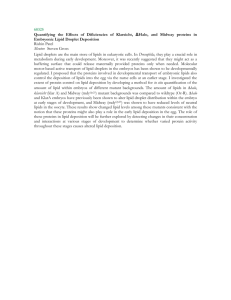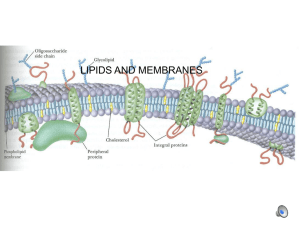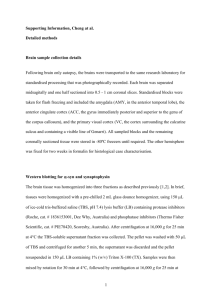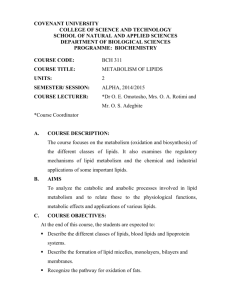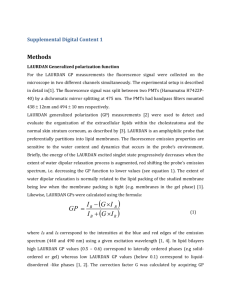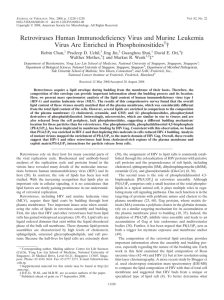tpj12659-sup-0004
advertisement
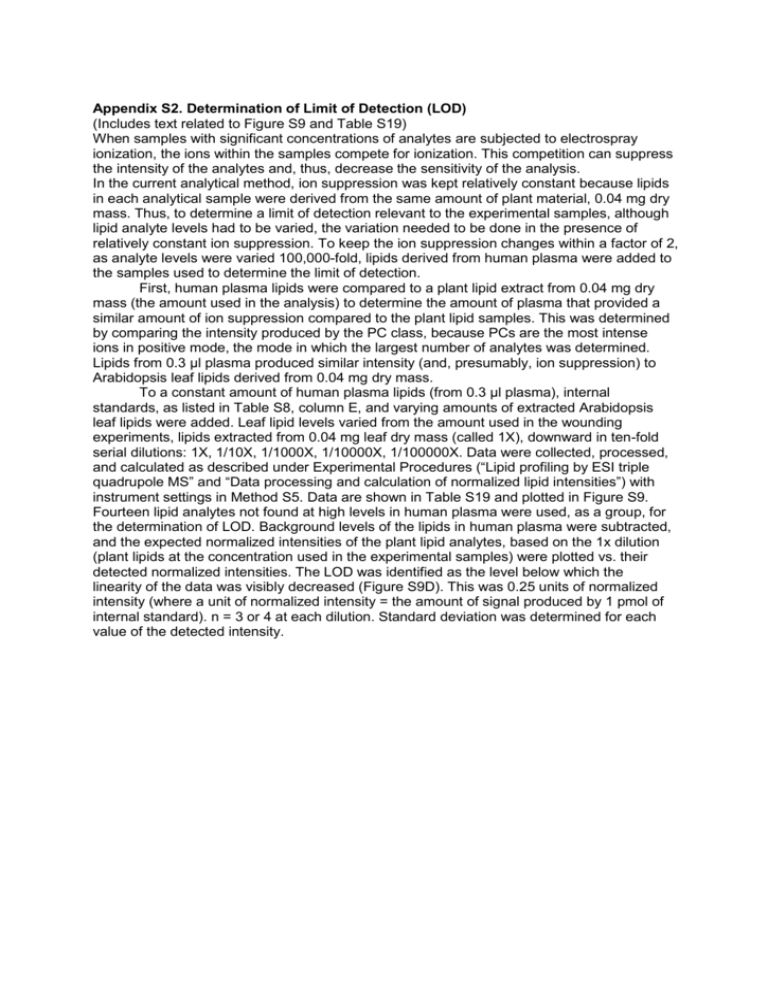
Appendix S2. Determination of Limit of Detection (LOD) (Includes text related to Figure S9 and Table S19) When samples with significant concentrations of analytes are subjected to electrospray ionization, the ions within the samples compete for ionization. This competition can suppress the intensity of the analytes and, thus, decrease the sensitivity of the analysis. In the current analytical method, ion suppression was kept relatively constant because lipids in each analytical sample were derived from the same amount of plant material, 0.04 mg dry mass. Thus, to determine a limit of detection relevant to the experimental samples, although lipid analyte levels had to be varied, the variation needed to be done in the presence of relatively constant ion suppression. To keep the ion suppression changes within a factor of 2, as analyte levels were varied 100,000-fold, lipids derived from human plasma were added to the samples used to determine the limit of detection. First, human plasma lipids were compared to a plant lipid extract from 0.04 mg dry mass (the amount used in the analysis) to determine the amount of plasma that provided a similar amount of ion suppression compared to the plant lipid samples. This was determined by comparing the intensity produced by the PC class, because PCs are the most intense ions in positive mode, the mode in which the largest number of analytes was determined. Lipids from 0.3 μl plasma produced similar intensity (and, presumably, ion suppression) to Arabidopsis leaf lipids derived from 0.04 mg dry mass. To a constant amount of human plasma lipids (from 0.3 μl plasma), internal standards, as listed in Table S8, column E, and varying amounts of extracted Arabidopsis leaf lipids were added. Leaf lipid levels varied from the amount used in the wounding experiments, lipids extracted from 0.04 mg leaf dry mass (called 1X), downward in ten-fold serial dilutions: 1X, 1/10X, 1/1000X, 1/10000X, 1/100000X. Data were collected, processed, and calculated as described under Experimental Procedures (“Lipid profiling by ESI triple quadrupole MS” and “Data processing and calculation of normalized lipid intensities”) with instrument settings in Method S5. Data are shown in Table S19 and plotted in Figure S9. Fourteen lipid analytes not found at high levels in human plasma were used, as a group, for the determination of LOD. Background levels of the lipids in human plasma were subtracted, and the expected normalized intensities of the plant lipid analytes, based on the 1x dilution (plant lipids at the concentration used in the experimental samples) were plotted vs. their detected normalized intensities. The LOD was identified as the level below which the linearity of the data was visibly decreased (Figure S9D). This was 0.25 units of normalized intensity (where a unit of normalized intensity = the amount of signal produced by 1 pmol of internal standard). n = 3 or 4 at each dilution. Standard deviation was determined for each value of the detected intensity.

